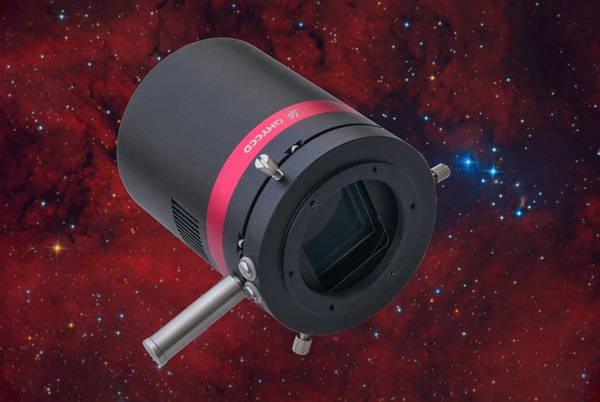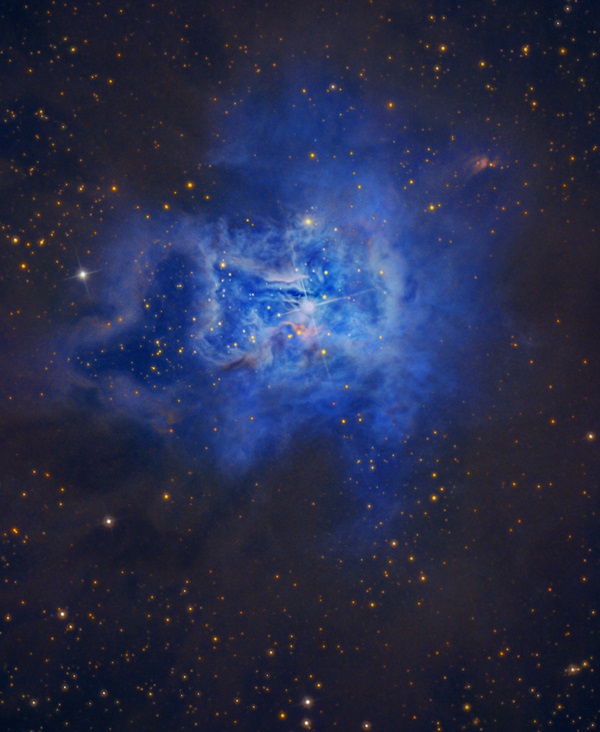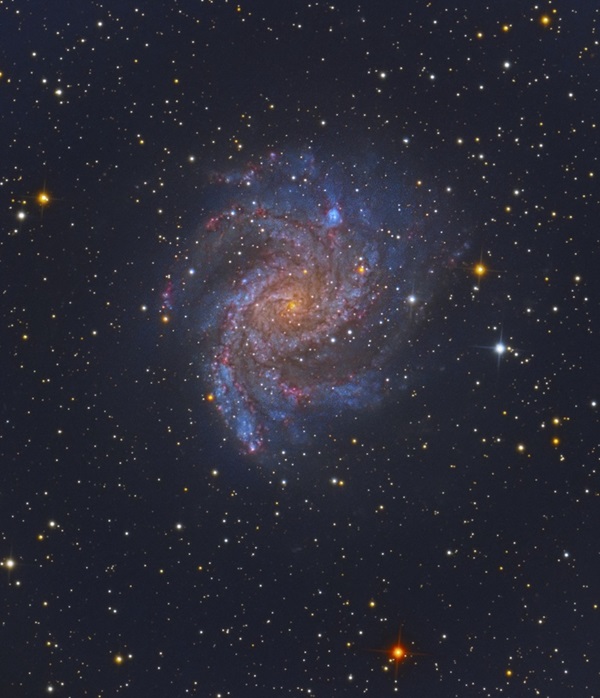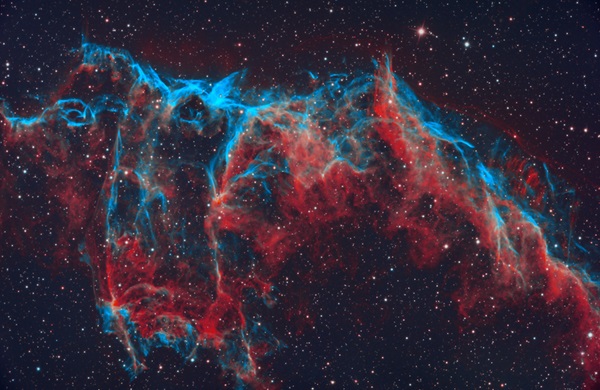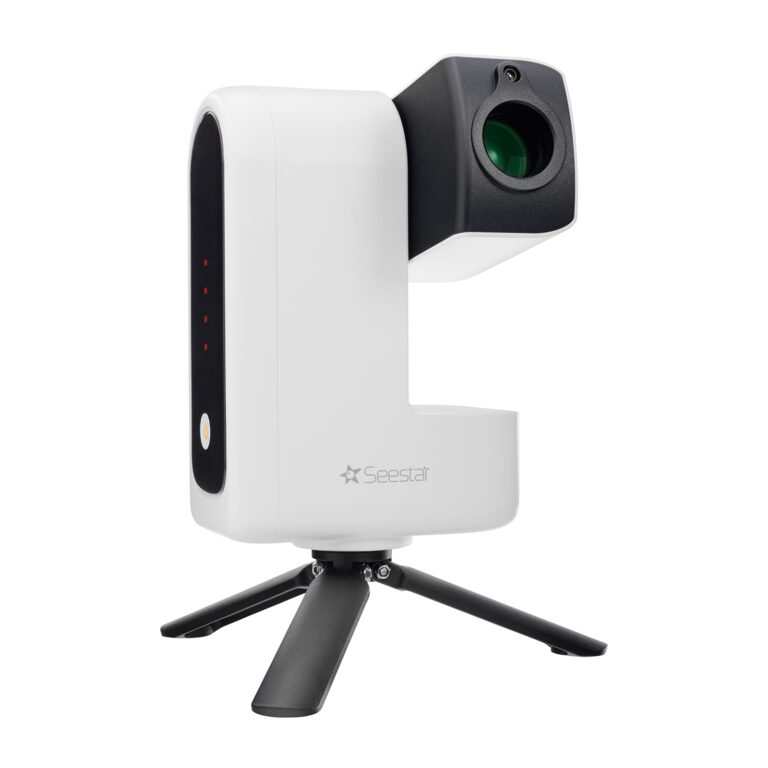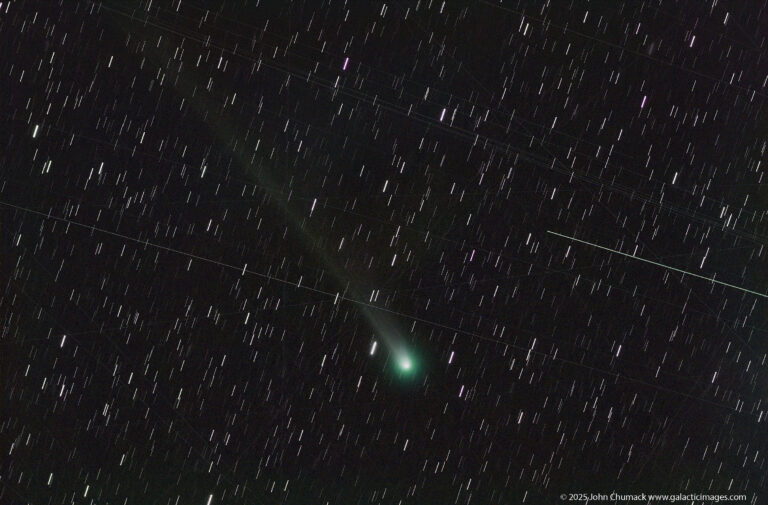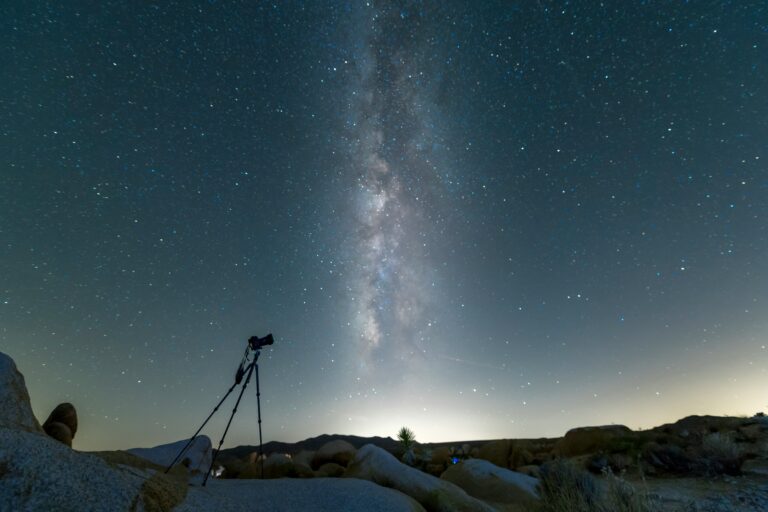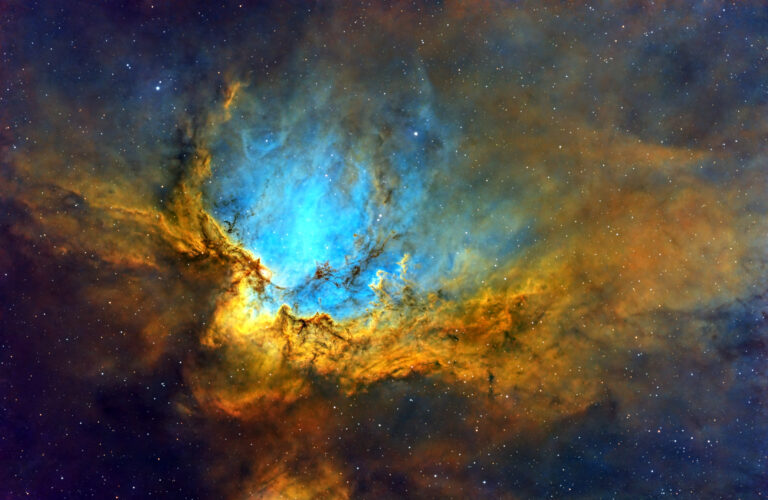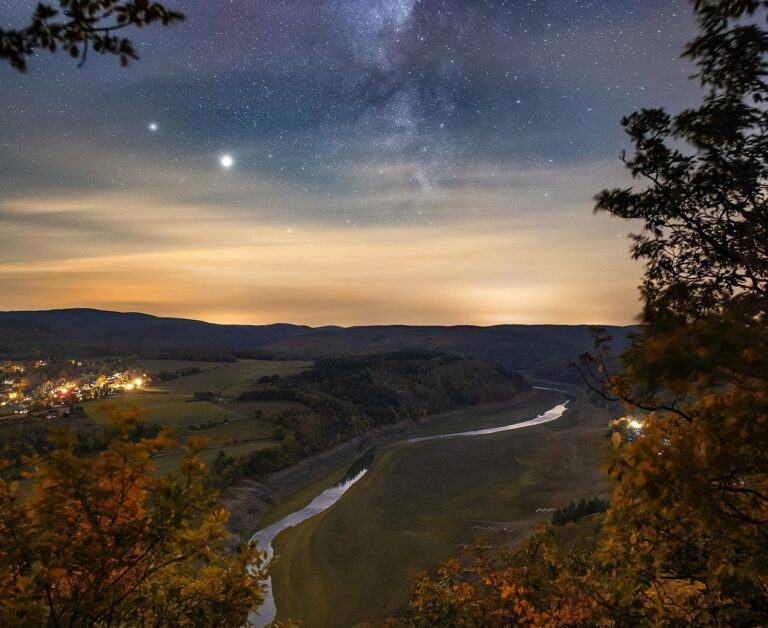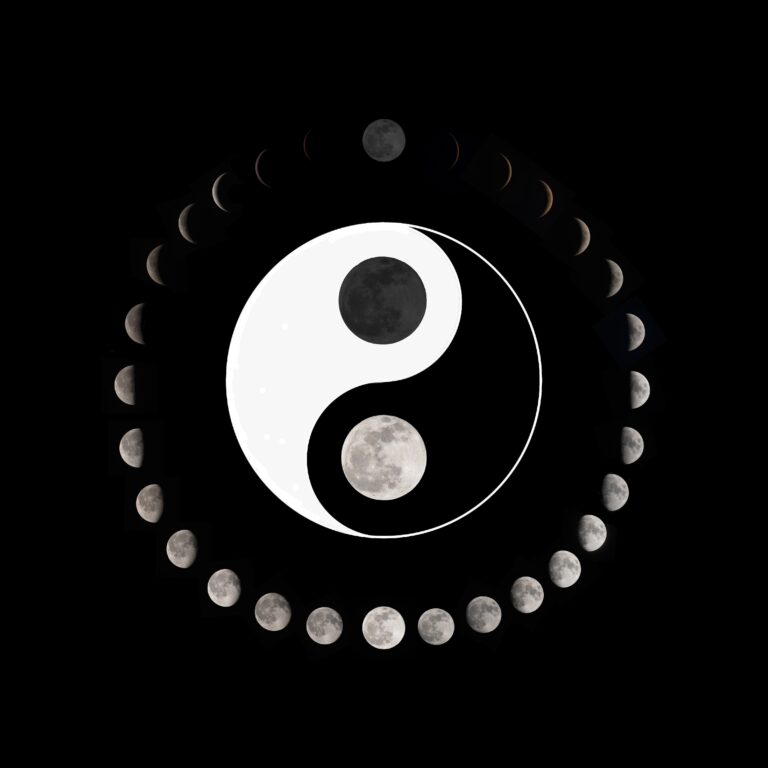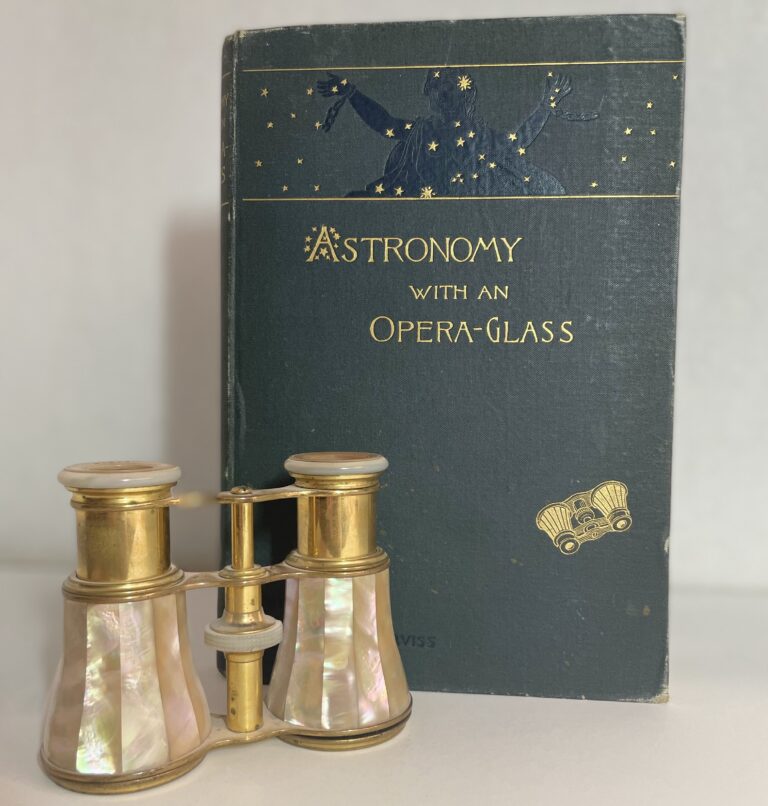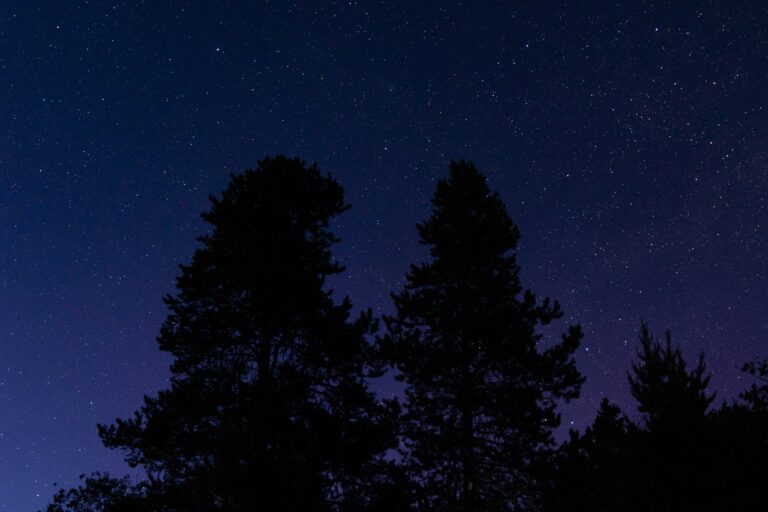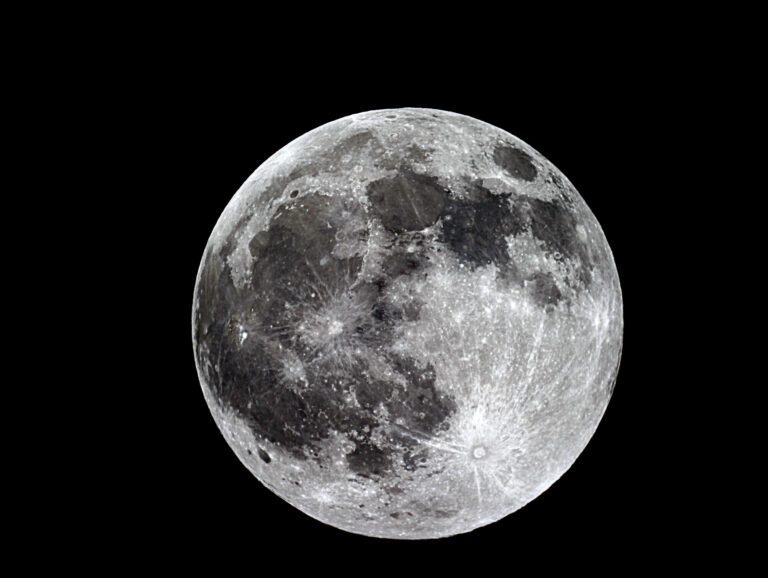Key Takeaways:
For 20 years, I have been using charge-coupled device (CCD) cameras, and I currently own the top-of-the-line SBIG STX-16803. But while studying two images I recently made using the latest QHY 410C CMOS camera, I had to wonder: Is CCD dead?
For years, I lectured about the asymptotic boundary of noise in CCD images. In a basic sense, this means that no matter how many frames you take to increase your signal-to-noise ratio for a cleaner image, you will always run into a wall of noise when you stretch your image to bring out deep shadows. But with QHY’s new CMOS camera, this troublesome wall of noise is nonexistent.
The QHY 410C is a one-shot color camera that utilizes the back-illuminated Sony IMX410 CMOS chip found in high-end cameras like the Nikon Z6 and the Sony A7 III. But the 410C has taken the full-frame (35 millimeter) 24-megapixel chip and mounted it in a camera with regulated cooling and zero amplifier glow, helping drive the noise to such a low level.
There also aren’t any noticeable cosmic ray hits, despite high quantum efficiency. (Quantum efficiency is the percentage of photons that are converted into recorded data.) With my SBIG STX-16803 CCD, quantum efficiency is around 60 percent; with a back-illuminated CMOS, it’s about 80 percent.
The commercial availability of these back-illuminated chips has been a big game-changer in photography. In a normal, front-illuminated chip, all the supporting electronics surround each light receptor (pixel). Thus, some of the area that receives light does not record it. In a back-illuminated chip, the supporting electronics are on the back of the chip, allowing 100 percent of the light receptors to absorb and record light. This results in a chip with much higher sensitivity, which is ideal for astronomy and astrophotography.
Color vs. mono
CMOS cameras come in two basic flavors: color and mono. A color camera splits the light into red, green, and blue (RGB) colors using a Bayer matrix. This typically consists of a microscopic array of colored filters — assembled in a pattern of two green, one blue, and one red — placed over the light receptors. Each of these clusters equals one color pixel. There are millions of clusters, so software must know the exact pattern used to create the colored pixels from the matrix through a process called deBayering. This is done automatically in DSLR and phone cameras. But for astrophotography, the raw Bayered image must be deBayered using computer software like Astro Art.
This leaves you with a raw 16-bit colored image that you can then stretch like a CCD image. Some photographers are concerned that color cameras have less resolution than mono cameras. But in practice, I have found that the limiting factors are the seeing, the guiding, and the optics, not the type of camera.
Before deBayering, all you see on your monitor is little black and white squares, which brings us to mono CMOS cameras. You can order CMOS chips that do not have a Bayer matrix installed. These mono chips are meant for use with color filters placed in front of them. Separate red, green, and blue exposures are made with the mono chip, then these frames are combined using software to create color.
So, what’s the difference? With a mono chip, you’re using all the pixels on the chip to capture each particular color of light. As a result, you will reveal more detail and possibly achieve a higher signal-to-noise ratio. But the same chip in a color model is split into four receptors per color pixel. For example, with only one red receptor per pixel, the color chip only records 25 percent of the red light that falls on it. Compare this with a mono chip with a red filter in front of it, where each pixel records 100 percent of the red light that falls on it.
On the other hand, with a color chip, you are recording all three colors simultaneously instead of separately. Purists and advanced imagers will typically go for the mono chip because it offers more detail and more user control. But I have been surprised by the performance you can get from a color chip if you give it enough exposure time. (Remember, you are splitting the signal four ways!) Before we leave this topic, I should also point out that a color chip has the huge benefit of avoiding all the alignment and combination issues that come with merging multiple color frames taken with a mono chip. If you want an easy life, go with a color option like the QHY 410C.
Another very interesting development has happened recently with color cameras. Go back a few years and narrow-band imaging was the sole domain of mono cameras. In addition to employing red, green, and blue filters with your mono sensor, you could also use Hydrogen-alpha (Hα), Oxygen-III (OIII), and Sulfur-II (SII) filters, which allow only light from very narrow portions of the spectrum to pass through.
But that all changed when the Optolong filter company realized that modern, highly sensitive color cameras can record Hα and OIII light simultaneously when there isn’t a standard ultraviolet and infrared (UV-IR) rejection filter in front of the camera chip. Optolong built a narrow-band filter called the L-eXtreme that allows only Hα and OIII light to come through, blocking out everything else. Once deBayered, the result is an image with the Hα and the OIII already combined, making your life even easier. This Hα-OIII image can then be added as another layer to the RGB image in Photoshop and combined via the Lighten blend mode. Remember, when you shoot the RGB frame, you must add a UV-IR rejection filter to keep those wavelengths from fogging up the shot.
Using the 410C
QHY calls their cooled CMOS (short for “complementary metal-oxide-semiconductor”) cameras COLDMOS cameras. And unlike CCDs, they have controls that emulate DSLRs — namely offset and gain. The offset will move the entire range of densities (histogram curve) away from pure black so you will have no clipped blacks. The gain is very similar to the ISO of your DSLR: It’s an amplification of the signal in the camera. Turning up the gain in a CMOS typically reduces the maximum number of photons a pixel can absorb before it becomes saturated, which is known as the deep well capacity. If your camera has a shallow deep well, bright stars will quickly turn pure white and lose their color, and even bright nebulae can appear washed out. To avoid this, I typically set my offset to 25 and reduce my gain to a low setting or even zero. The 410C has a deep well of 120,000 binned 1 by 1 in a low-gain setting. Typical deep wells, meanwhile, range between 25,000 to 75,000.
My exposure times depend on the telescope and the brightness of my target. I typically shoot RGB one night and, if needed, narrow band the next. The RGB exposures are usually between 10 and 20 minutes with an f/7 telescope. I double the exposure time when using a narrow-band filter. For the technically curious, the QHY 410C has only a trace 1.6-electron read noise at low gain and a dynamic range of more than 14 f/stops. The camera’s chip has large 6-micron pixels that are very good at recording faint levels of light during long exposure shots. It is, to date, Sony’s most light-sensitive CMOS chip.
The camera also has a two-stage thermoelectric cooler, and QHY employs unique thermal noise-control technology to reduce noise to a very low level, all without affecting the raw data integrity. This is obvious when you see the results: There is zero amplifier glow, no matter how long the exposure.
The windows of the chamber are constructed to prevent dewing in wet conditions, as well as AR+AR coated to reduce reflections. The drivers for the camera have been time tested and work flawlessly. In fact, so far, I have never had a single problem with this camera.
The QHY 410C can do a lot of imaging, from RGB to narrow band. Color cameras like this alleviate some of the challenges that crop up when using mono cameras. They are also usually cheaper and lighter than their mono counterparts. All you need is a filter slide drawer and a filter holder so that you can swap in UV-IR and narrow-band filters as needed.
A camera as powerful as the QHY 410C would have been unimaginable 10 or even just five years ago. Back-illuminated chips were once only the stuff of research labs. But now, they are readily available to the consumer. So, when you own a QHY 410C, you’re owning the next big step in imaging technology, as well as helping usher in the arrival of the CMOS chip as a mainstay in astroimaging.

